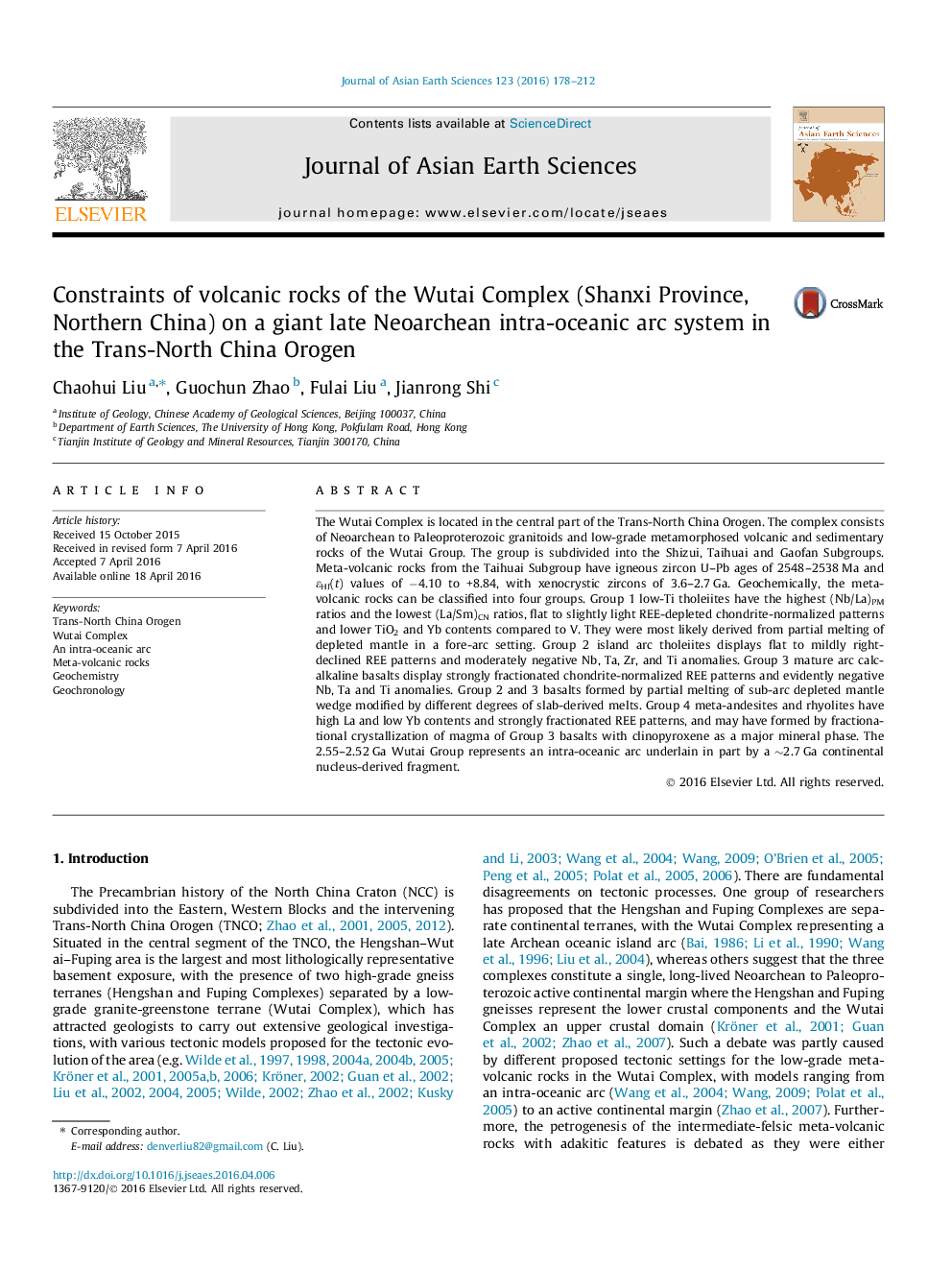| Article ID | Journal | Published Year | Pages | File Type |
|---|---|---|---|---|
| 4730013 | Journal of Asian Earth Sciences | 2016 | 35 Pages |
•Wutai meta-volcanics erupted from 2548 Ma to 2538 Ma.•Xenocrystic zircons at 3.61 Ga, 2.97–2.83 Ga and 2.7 Ga were found.•Group 1 derived from partial melting of depleted mantle in a fore-arc tectonic setting.•Group 2 and 3 derived from a metasomatized mantle wedge.•An intra-oceanic arc underlain in part by a ∼2.7 Ga micro-continent at 2.55–2.52 Ga.
The Wutai Complex is located in the central part of the Trans-North China Orogen. The complex consists of Neoarchean to Paleoproterozoic granitoids and low-grade metamorphosed volcanic and sedimentary rocks of the Wutai Group. The group is subdivided into the Shizui, Taihuai and Gaofan Subgroups. Meta-volcanic rocks from the Taihuai Subgroup have igneous zircon U–Pb ages of 2548–2538 Ma and εHf(t) values of −4.10 to +8.84, with xenocrystic zircons of 3.6–2.7 Ga. Geochemically, the meta-volcanic rocks can be classified into four groups. Group 1 low-Ti tholeiites have the highest (Nb/La)PM ratios and the lowest (La/Sm)CN ratios, flat to slightly light REE-depleted chondrite-normalized patterns and lower TiO2 and Yb contents compared to V. They were most likely derived from partial melting of depleted mantle in a fore-arc setting. Group 2 island arc tholeiites displays flat to mildly right-declined REE patterns and moderately negative Nb, Ta, Zr, and Ti anomalies. Group 3 mature arc calc-alkaline basalts display strongly fractionated chondrite-normalized REE patterns and evidently negative Nb, Ta and Ti anomalies. Group 2 and 3 basalts formed by partial melting of sub-arc depleted mantle wedge modified by different degrees of slab-derived melts. Group 4 meta-andesites and rhyolites have high La and low Yb contents and strongly fractionated REE patterns, and may have formed by fractionational crystallization of magma of Group 3 basalts with clinopyroxene as a major mineral phase. The 2.55–2.52 Ga Wutai Group represents an intra-oceanic arc underlain in part by a ∼2.7 Ga continental nucleus-derived fragment.
Graphical abstractFigure optionsDownload full-size imageDownload as PowerPoint slide
